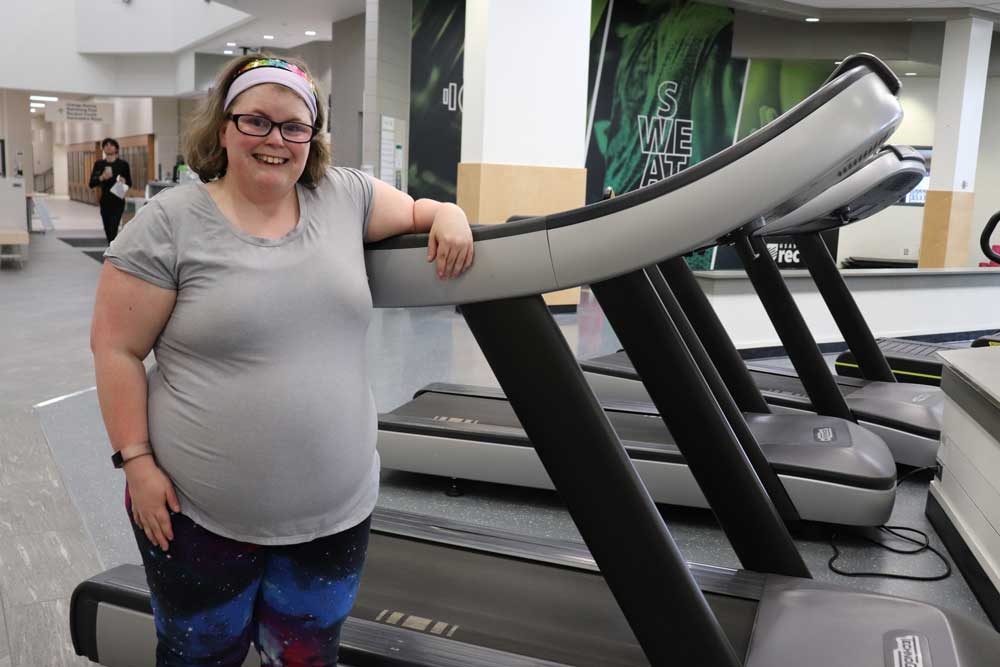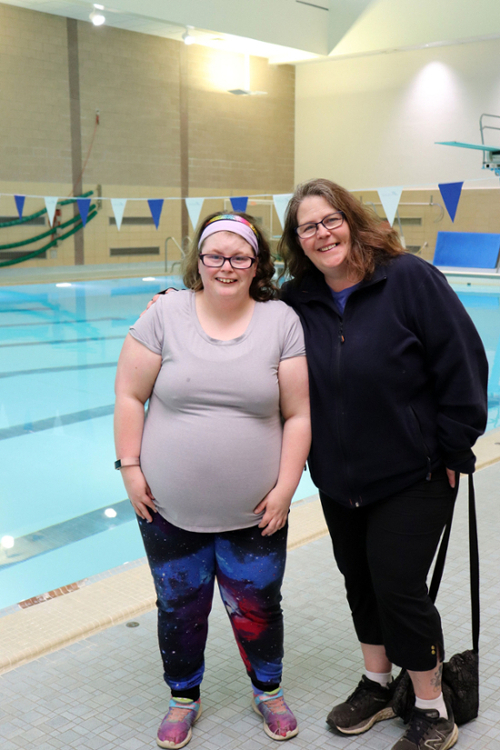
Recreational Inclusivity at USask Rec
USask Rec is the focal point for recreation and physical activity on campus and has continued to create more inclusive programs each year. But there is one program that has been around since 1992: the Physical Activity for Active Learning (PAAL).
By Alyssa Wiebe | Kinesiology Communications
“The PAAL program got Jessica to start moving more. It is now a part of her fitness routines,” said Denise Skuce, PAAL parent. “She doesn't necessarily like going for walks or to the gym, but if it's to go to PAAL she's up bright and early on a Saturday morning to go volunteer.”
PAAL is a program designed for individuals of all ages who are experiencing physical and/or intellectual disabilities. Its mission is to provide quality physical activity with an emphasis on fun, skill development, and social interaction.
The program began as a summer sport camp which involved aquatics, dance and gymnastics in 1992 at the hands of Linda James, Jim McClements, Keith Russell, and Joan Krohn. The initial activities for participants were chosen because of the spaces available in the College of Physical Education at the time.
As the years progressed and the Physical Activity Complex was opened in 2002 on the USask campus, the PAAL program evolved into Saturday morning programs for children and teenagers, Wednesday afternoon programs for teenagers and adults, and lastly, the PAAL Fitness program on Tuesday and Thursday evenings.
PAAL became a hub for participants experiencing physical and/or intellectual disabilities to come be active, push their limits, and breakdown barriers. Jessica Skuce has been a participant of the PAAL program since 2005 and her mother, Denise, says that the program has given her daughter a new perspective on doing things she didn’t think she could do.

A program like PAAL does not operate under one staff member alone. The program relies heavily on volunteers and at the beginning, high school students were the perfect fit as they were required to earn volunteer hours as a part of their curriculum. Many of those students chose the PAAL program to earn those hours and give back to their community. In recent years, that requirement has changed and the PAAL program has shifted its volunteer recruitment to university students.
“Those volunteers were our summer saviours,” said Kim Jones, current Aquatics Coordinator with USask Rec and PAAL coordinator. “Without them, the program would have never been a success. To see the way students interact with the participants is rewarding and gives perspective to the way they live their lives.”
Many participants begin with PAAL at a young age and return each year to be a part of a program that values them, pushes them, and encourages them to be active.
“Jessica started when she was about 9 or 10 with child PAAL and moved on to teen and adult PAAL,” said Skuce. “When she was about 18-19, the student program coordinator recommended that Jessica just come to volunteer as she was very helpful with the other younger participants in the groups. This was a huge confidence boost for her. She loves to be around the other participants and volunteers. She is now 30 and loves going every week.”
PAAL has also brought benefit to the College of Kinesiology from a research perspective. Over the years research has been conducted on Cerebral Palsy and Bone Health. It has also provided student research and presentation opportunities at conferences such as the Physical Health and Education Saskatchewan and National Intramural-Recreational Sports Association.
Currently, researchers in the college are looking at Bone Health and Physical Activity in children with autism spectrum disorder (ASD). The research is focused on optimizing bone strength, particularly in children and youth who are at elevated risk of fracture lifelong (i.e., children with ASD or type 1 diabetes).
“Our research has revealed poorer bone health and lower physical activity in children and youth with ASD. We anticipate that children do not get sufficient exercise stimulus for optimal bone strength development,” said Dr. Saija Kontulainen, Associate Dean, Research and Grad Students in the College of Kinesiology. “Thus, we are co-designing tailored exercise intervention to optimize bone strength in children with ASD in the near future.”
In the past, the College of Kinesiology has also held fundraisers such as KIN Spin, a run, walk and roll 1KM or 5KM event that was put on for 10 years. This event generated over $150,000 to the College of Kinesiology Adapted Physical Activity Fund to help off-set costs of running the PAAL program each year.
A program such as PAAL with over 33 years of history is invaluable to the USask campus and Saskatoon community. It highlights what the campus and community can do for all people when we work together to create inclusive spaces and opportunities for everyone.
“It’s an amazing program where children with diverse needs can play sports and be active with other children with diverse needs. It allows children to be able to see others, just like them and know they are not alone. The PAAL program isn't just about physical activity, it's about belonging. Getting active and having fun is a bonus,” said Skuce.
If you or your child is interested in getting involved with the PAAL program, please visit rec.usask.ca for more information or visit us in the Physical Activity Complex on campus.
